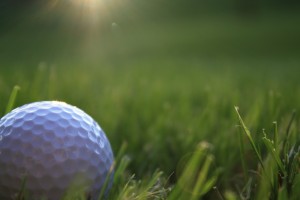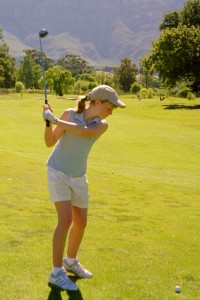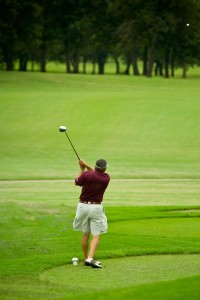Golf and Chiropractic: A Natural Combination
May 30, 2012 With summer finally here millions of individuals are dusting off their golf clubs and hitting the driving range or golf course. Unfortunately, a significant percentage will suffer needlessly with back pain, which is the most common problem among golfers.
With summer finally here millions of individuals are dusting off their golf clubs and hitting the driving range or golf course. Unfortunately, a significant percentage will suffer needlessly with back pain, which is the most common problem among golfers.
How well you do as a golfer is a direct reflection of your mental and physical lifestyle. This is true even if all you do is play a strenuous nine holes each weekend. Poor swing mechanics, poor posture and improper conditioning will not only affect your game, but your overall health as well. Chiropractic can help! Chiropractic and golf are wonderful partners. This is because spinal adjustments keep your spine strong and healthy, maintains correct posture and not to mention increasing your spines range of motion. This can prevent pain, injury and nervous system interference. Maintaining good posture is important because the normal curves give the spinal column increased flexibility, enhances the shock absorption capacity, and makes sure there is adequate stiffness and stability at each spinal joint.
 Lets look at the golf swing in more detail. The swing is performed by coiling the upper body on the back swing against the resistance of the lower body before being unleashed. This means powerful muscles twist and pull at the lumbar spine. Due to bad posture, poor back and abdominal toning and inflexibility, the discs of the spine may be squeezed during the swing and lower back problems may result. A large myth associated with the golf swing involves the notion that the club speed at ball impact is dependent on maximum spinal rotation during the back swing. Many instructors advocate this theory and recommend golfers keep their pelvis as stationary as possible, while the spine is maximally rotated. These swing positions are popular because it is believed that maximal spinal rotation somehow engages the “big” muscles of the back, allowing for a sling shot effect during the downswing. As a chiropractor I find this theory interesting because there are no known back muscles that require spinal rotation to become engagaed. This “big muscle” theory is flawed. Maximal spinal rotation doesn’t engage the spinal muscles or the other muscles required to generate power in the golf swing, such as the latissimus dorsi (a.k.a. the lats), pectoralis major and the muscles of the arm and forearm.
Lets look at the golf swing in more detail. The swing is performed by coiling the upper body on the back swing against the resistance of the lower body before being unleashed. This means powerful muscles twist and pull at the lumbar spine. Due to bad posture, poor back and abdominal toning and inflexibility, the discs of the spine may be squeezed during the swing and lower back problems may result. A large myth associated with the golf swing involves the notion that the club speed at ball impact is dependent on maximum spinal rotation during the back swing. Many instructors advocate this theory and recommend golfers keep their pelvis as stationary as possible, while the spine is maximally rotated. These swing positions are popular because it is believed that maximal spinal rotation somehow engages the “big” muscles of the back, allowing for a sling shot effect during the downswing. As a chiropractor I find this theory interesting because there are no known back muscles that require spinal rotation to become engagaed. This “big muscle” theory is flawed. Maximal spinal rotation doesn’t engage the spinal muscles or the other muscles required to generate power in the golf swing, such as the latissimus dorsi (a.k.a. the lats), pectoralis major and the muscles of the arm and forearm.
